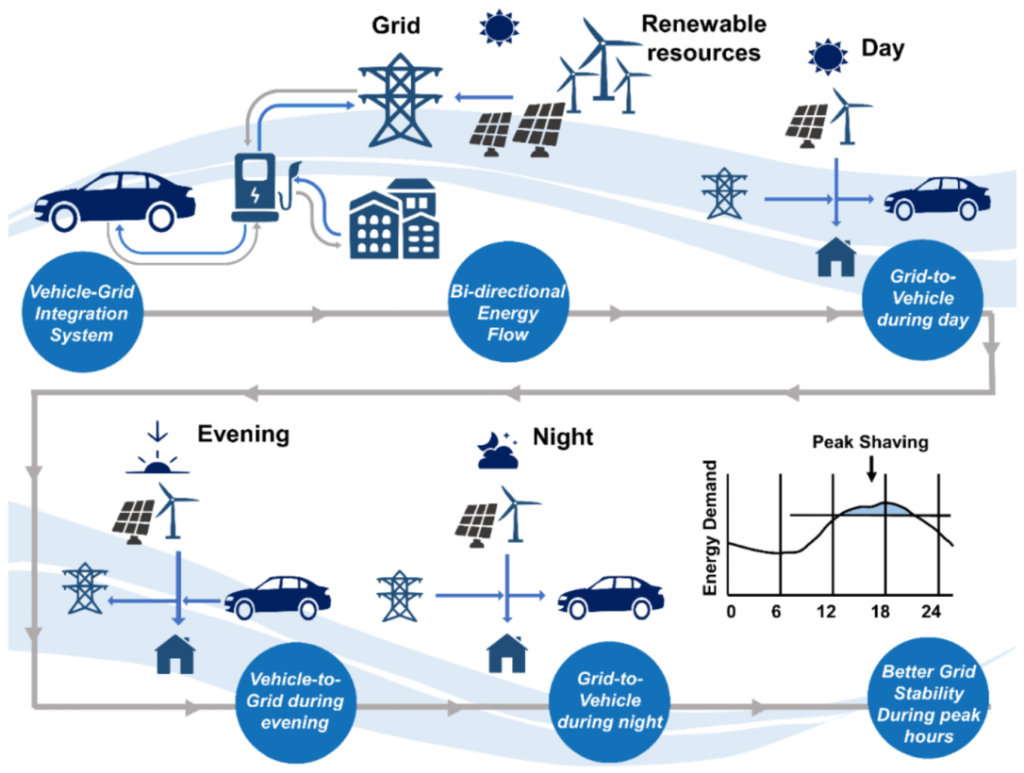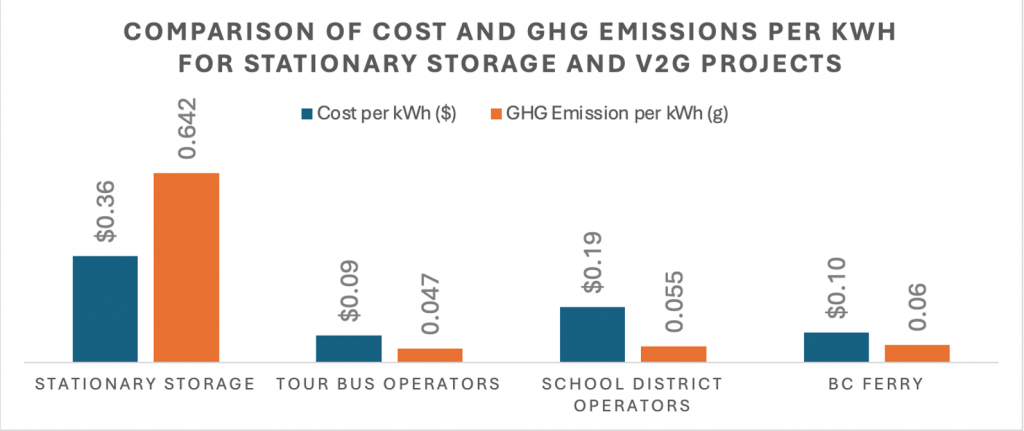The Vehicle-to-Grid (V2G) project in British Columbia explores an innovative solution to two pressing challenges: balancing electricity demand during peak periods and reducing greenhouse gas (GHG) emissions. With energy consumption surging in winter due to heating and other needs, the project evaluates the feasibility of using idle electric vehicle (EV) batteries as temporary energy storage to support the grid. This approach not only enhances energy reliability but also makes use of existing resources, reducing the need for costly stationary battery systems.
The study focuses on three potential pilot cases: tour bus operators, school districts, and BC Ferries. Each scenario is assessed for financial viability, infrastructure needs, and GHG reduction potential. By leveraging idle periods of EV fleets, V2G could provide a cost-effective and sustainable alternative to traditional energy storage methods. For instance, the analysis found that V2G systems offer significantly lower costs per kWh and substantial GHG savings compared to stationary systems.
This initiative also aligns with British Columbia’s clean energy goals, making it a timely exploration into how technology can drive sustainability. Through in-depth modeling and stakeholder engagement, the project highlights the potential of V2G to transform energy systems, while identifying key areas for further research and development.

Source: Ravi, S. S., & Aziz, M. (2022)
Vehicle-to-Grid (V2G) technology enables bi-directional energy flow, allowing EVs to store renewable energy during low-demand periods and discharge energy back to the grid during peak hours. This process stabilizes the grid, supports renewable integration, and reduces peak energy demand through load balancing and peak shaving.
This study incorporates qualitative interviews with stakeholders, including fleet operators and utilities, to identify logistical challenges and operational barriers to implementing Vehicle-to-Grid (V2G) technology. Insights from these discussions highlighted issues such as fleet availability, scheduling constraints, battery degradation, and operator compensation, ensuring practical challenges were integrated into the analysis.
Quantitative financial modeling formed the core of the analysis, estimating costs per kilowatt-hour (kWh) for stationary storage and V2G systems. Models incorporated infrastructure investments, maintenance expenses, and energy degradation over a 10-year lifespan. Key metrics such as Net Present Value (NPV) were calculated using a 6% discount rate to compare project viability across options like tour buses, school districts, and BC Ferries. By combining operational data with financial assumptions, the analysis provided a detailed evaluation of the cost-effectiveness and scalability of V2G technology.
Cost per kWh: Cost per kWh is calculated by dividing the total project costs, including initial investment, maintenance, and battery degradation, by the total energy throughput over the project’s lifetime.
GHG per kWh: GHG emissions per kWh are determined by multiplying the energy throughput by an emission factor, which accounts for grid intensity, infrastructure emissions, and operational losses.

The analysis highlights the financial and environmental advantages of Vehicle-to-Grid (V2G) technology compared to stationary storage systems. Stationary storage systems exhibit the highest cost per kWh at $0.36, driven by significant capital and maintenance costs. In contrast, V2G systems offer substantially lower costs. Among the projects, tour bus operators are the most cost-effective, with a cost per kWh of $0.092, leveraging extended idle periods and high battery capacity. School district buses and BC Ferries demonstrate costs of $0.189 and $0.103 per kWh, respectively, reflecting differences in fleet size, operational periods, and energy throughput. V2G projects also deliver significant GHG savings compared to stationary systems. From the pilot, tour bus operators provide 1,012.5 MWh over three months, saving 602,438 kg CO₂. School district buses contribute 93 MWh in one month, reducing emissions by 55,056 kg CO₂, while BC Ferries deliver 60 MWh in one month, achieving 35,520 kg CO₂ savings.
The V2G analysis highlights its potential but reveals critical challenges in practical implementation. Interviews identified barriers such as fleet coordination, idle time alignment, and limited EV availability, particularly for heavy and medium-duty vehicles. Quantitative modeling shows competitive costs, but expenses like operator compensation and battery degradation risk financial feasibility. Pilot projects are necessary to validate assumptions, refine cost models, and address operational complexities.